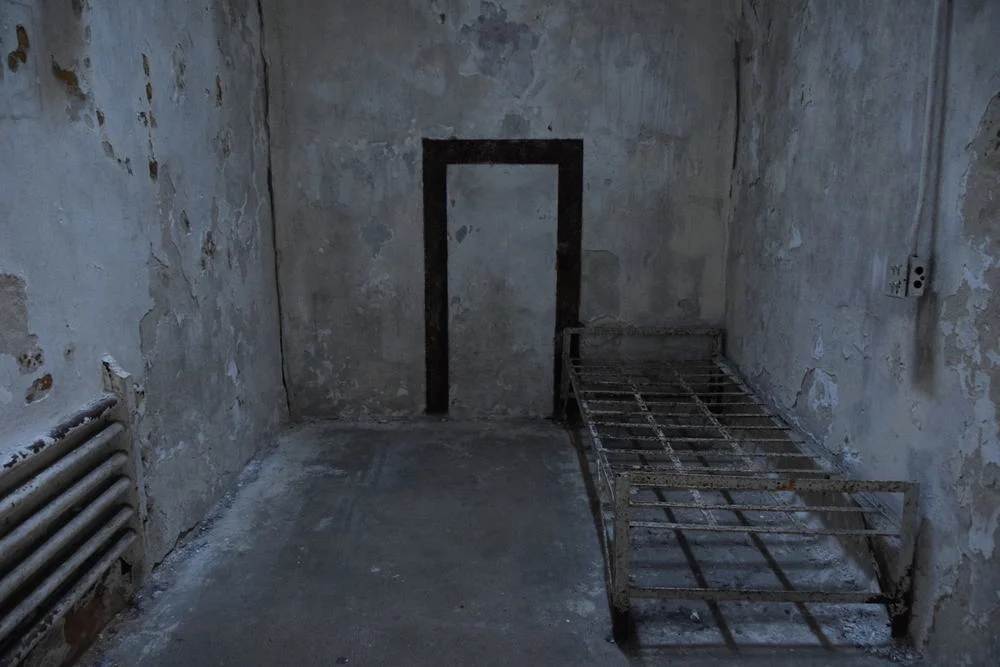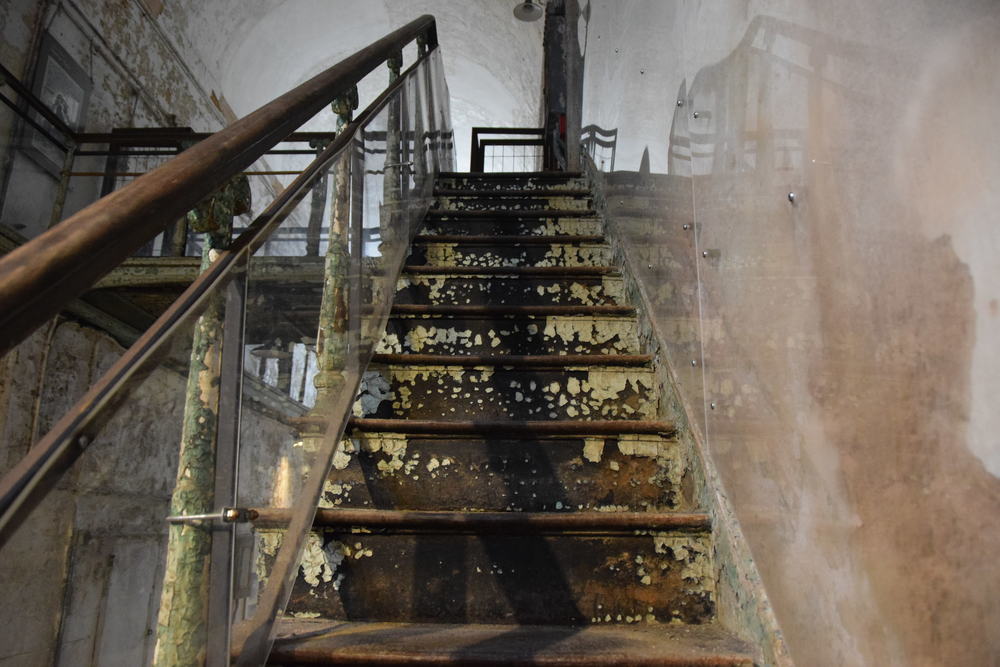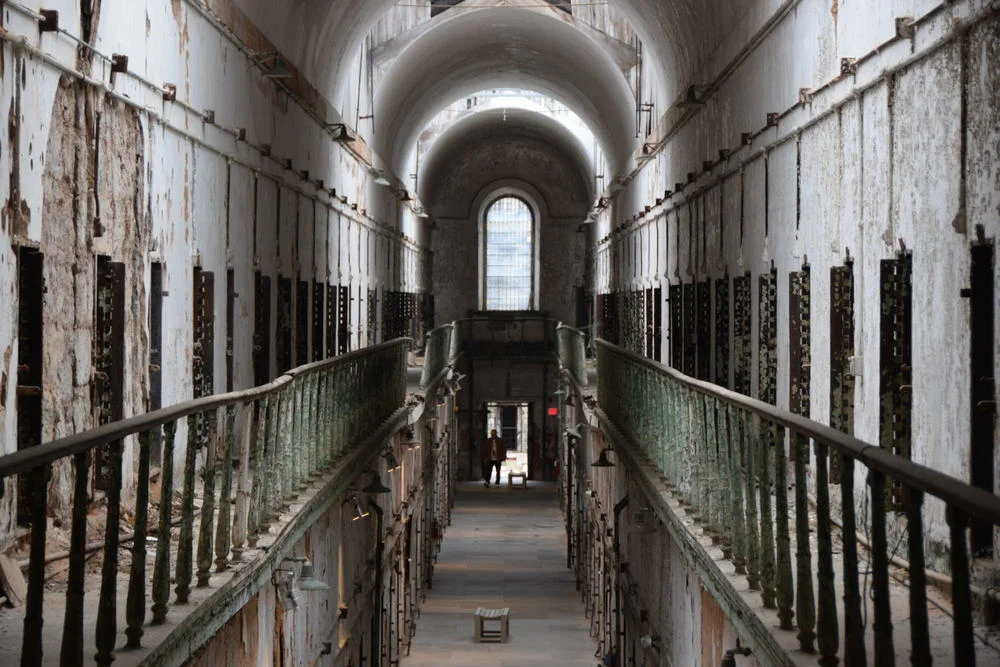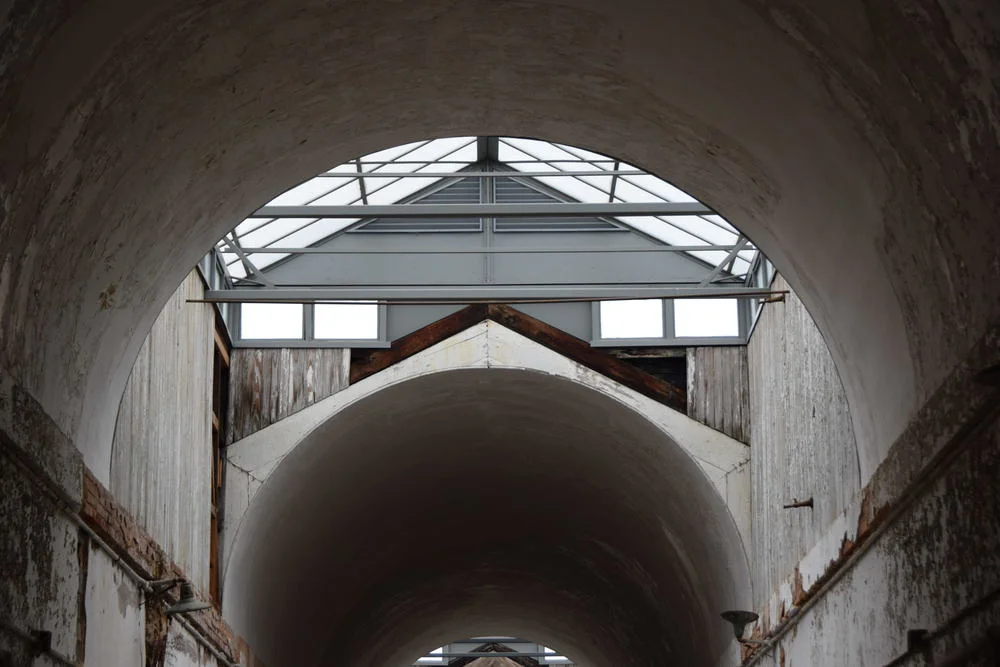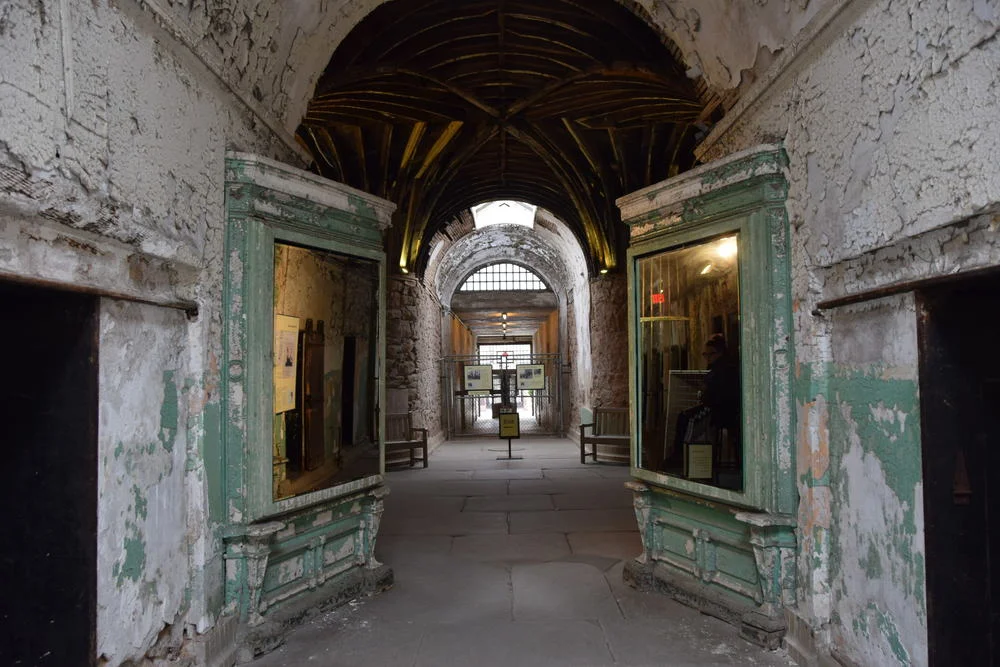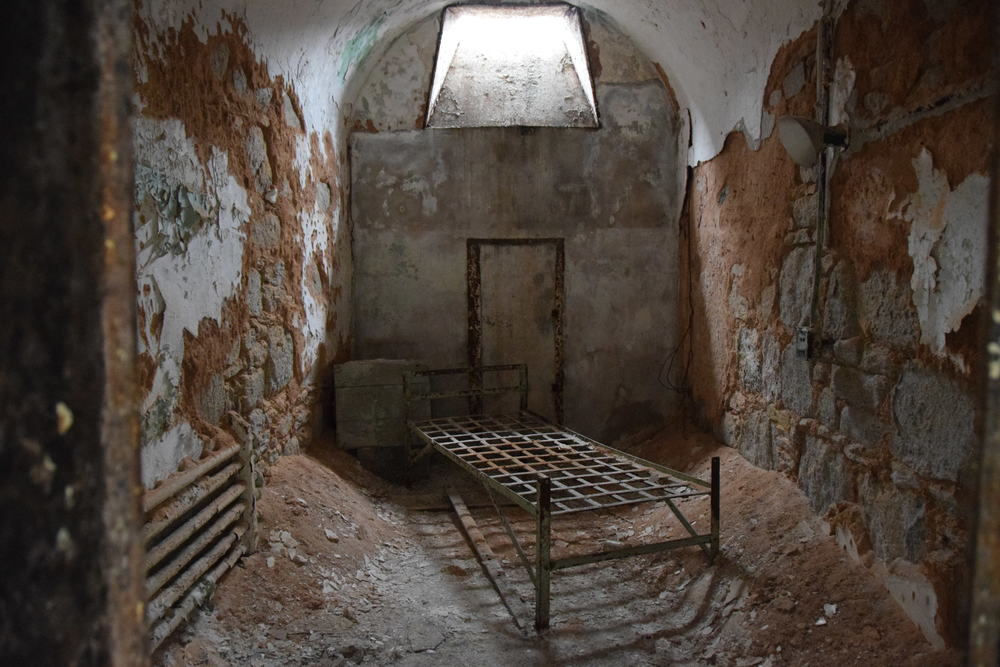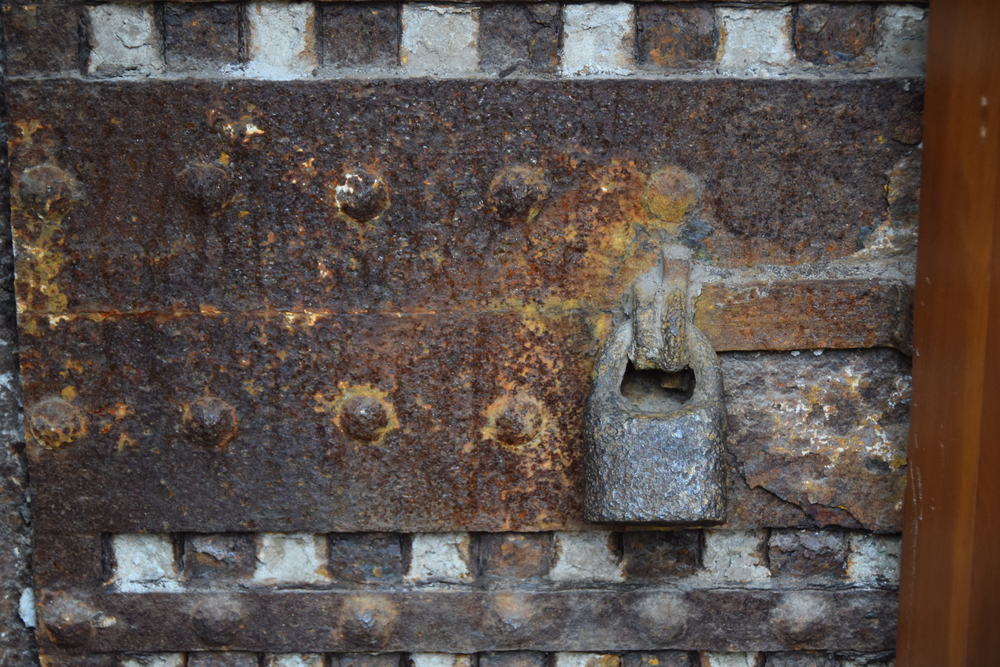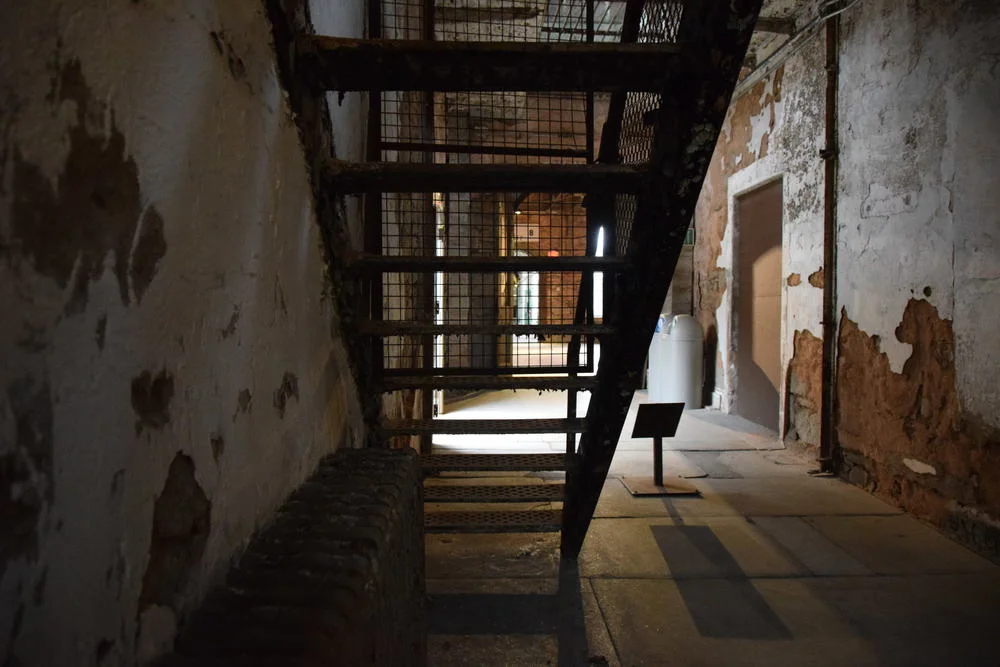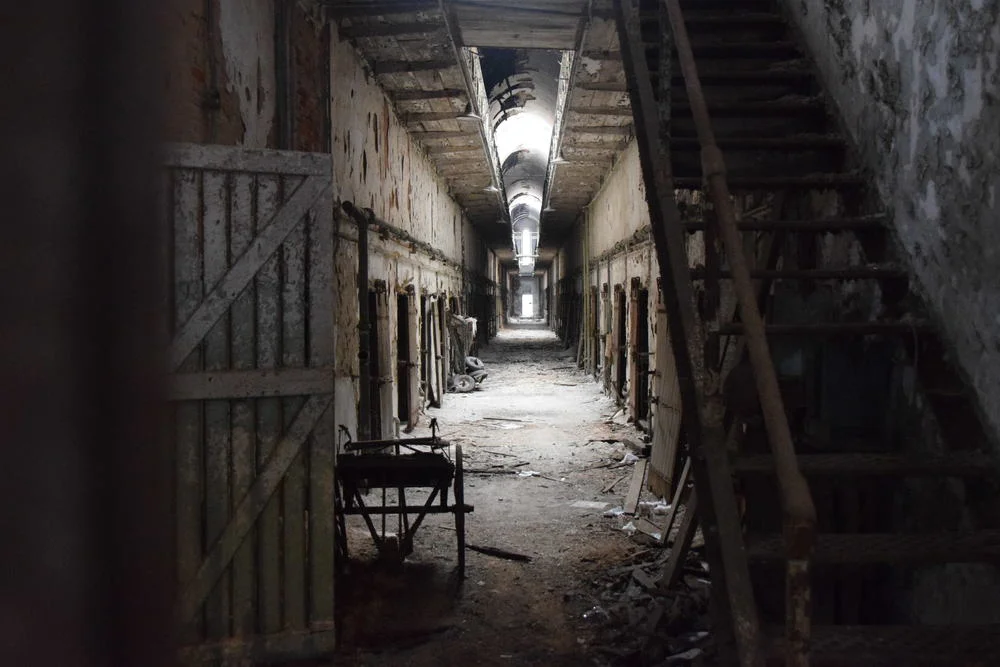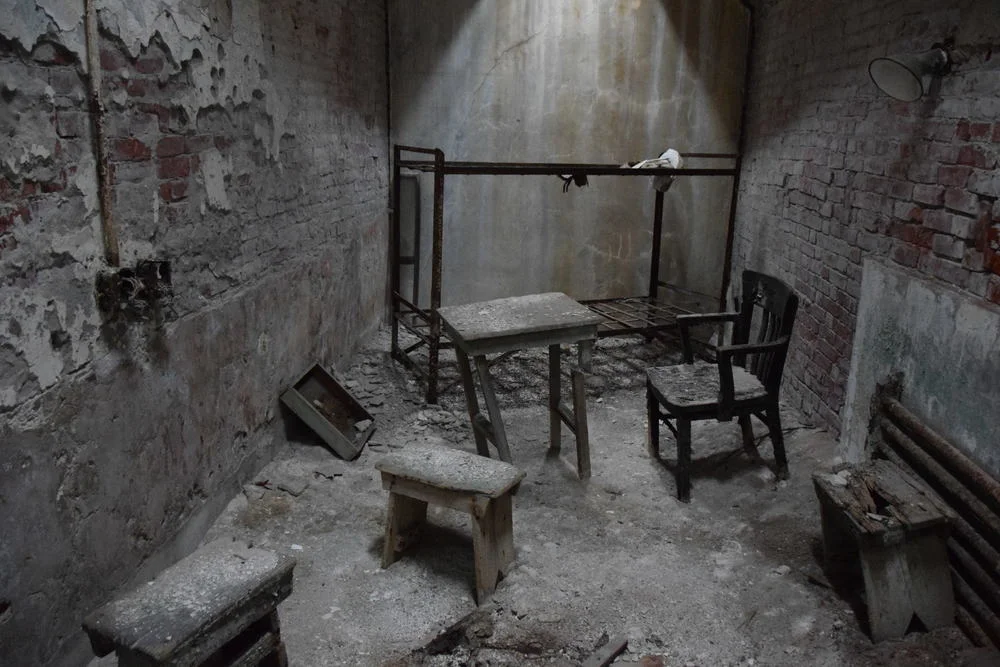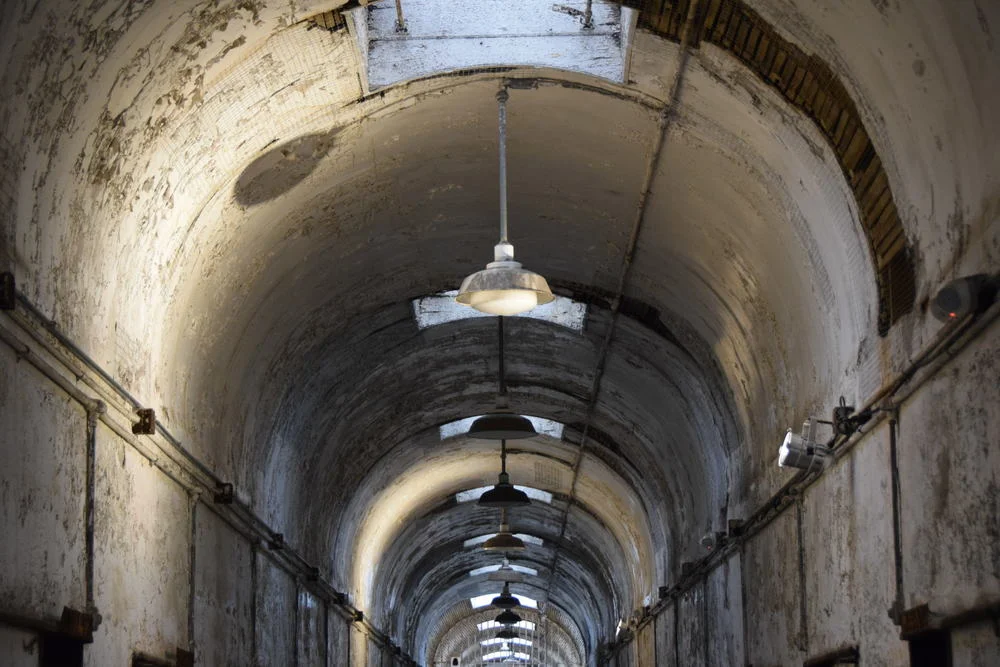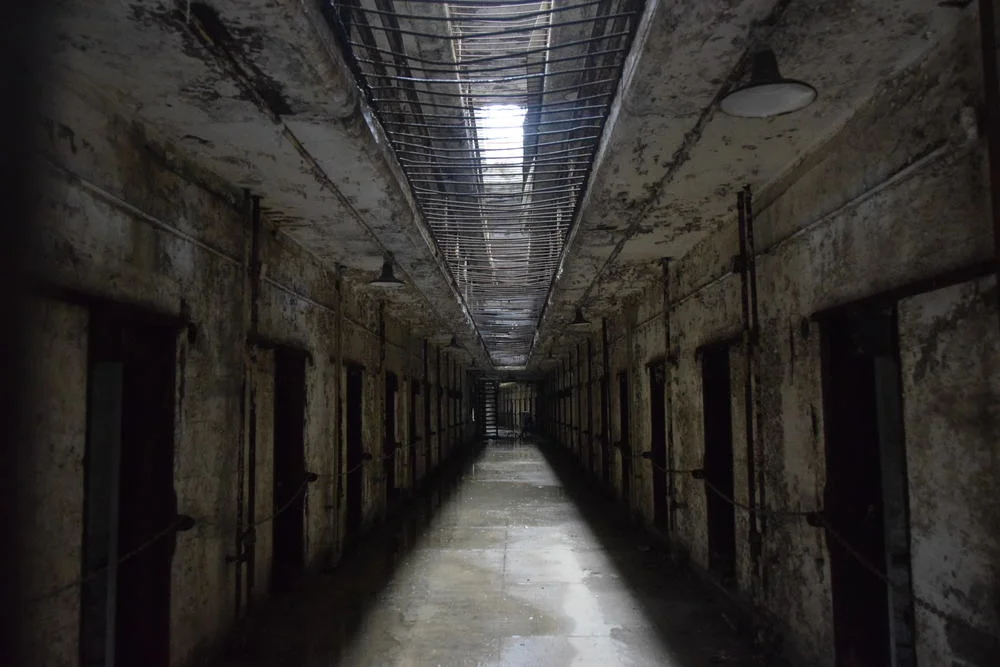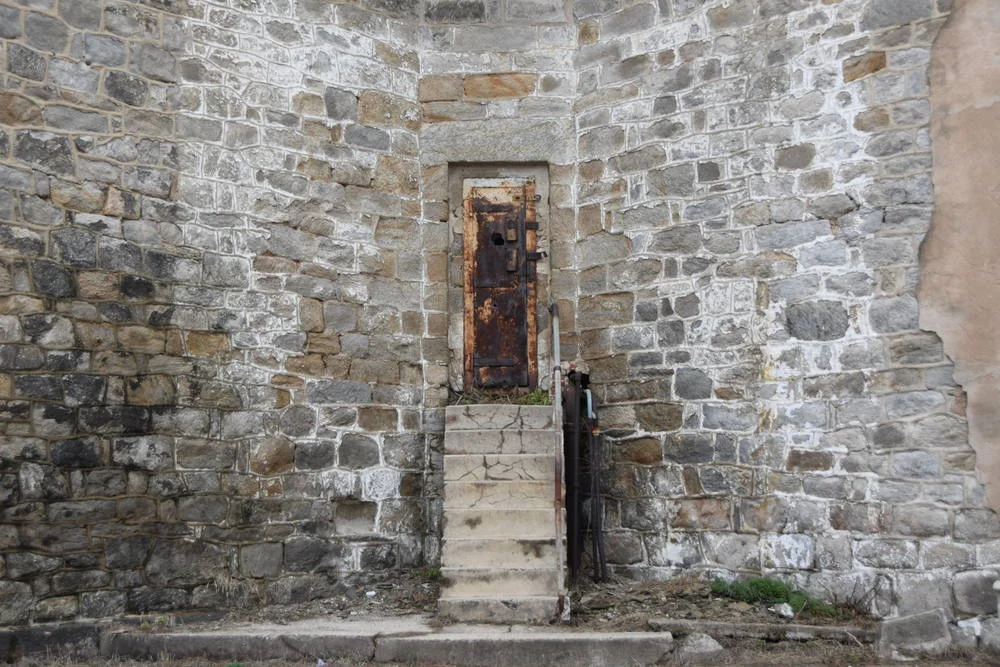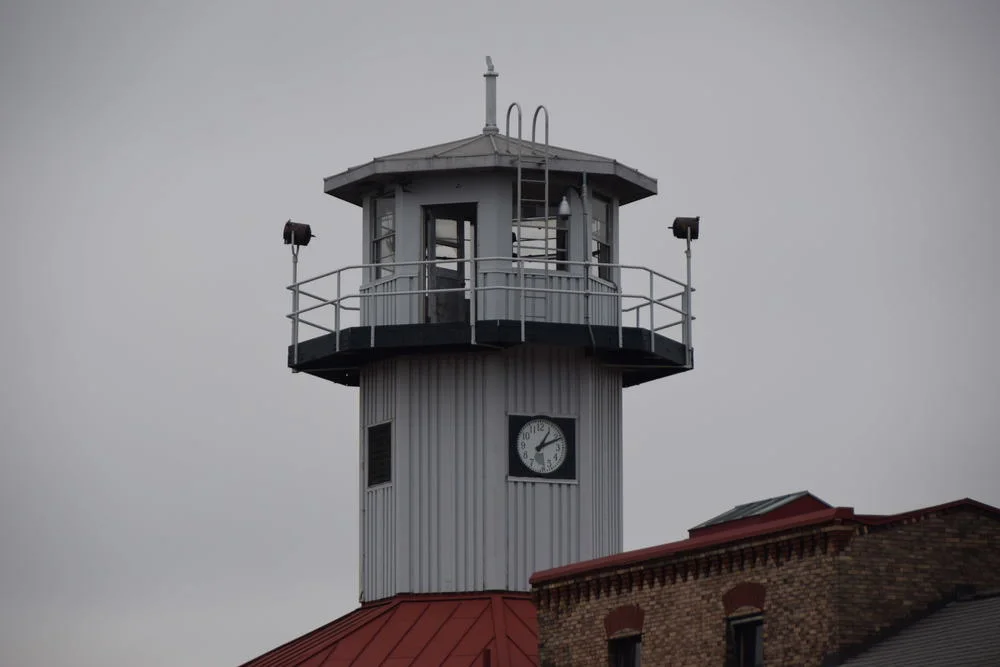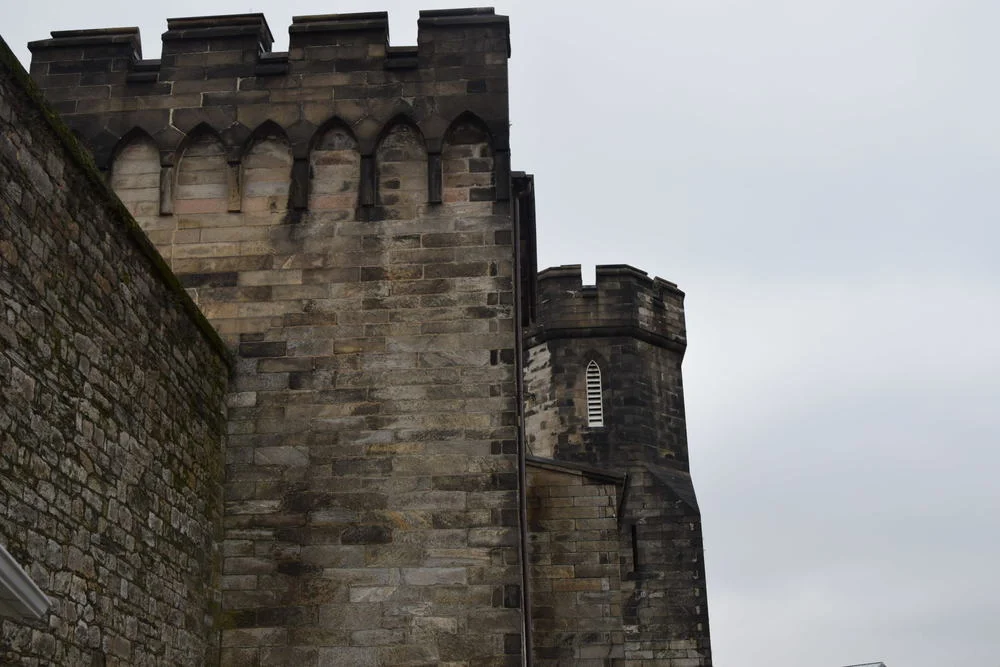When I was a kid, I went out to San Francisco with my favorite cousin, and he took me to Alcatraz. It began my life long interest in prisons. Well, maybe not prisons, per se, but the stories of inmates in prisons. You figure if someone manages to get locked up, there's a helluva backstory about how that happened.
On Wednesday morning just before the new year, I woke up dumb early to drive down to Philly to Eastern State Penitentiary. It's one of the oldest prisons in America (1829), the most expensive public building ever at the time it was constructed, and in its time, one of the most famous prisons in the world. No seriously, it was a tourist attraction. Blame the architecture, not the most famous prisoner, Al Capone. Both are pretty fascinating.
Eastern Penn also became the model for prisons, adopting a Quaker-style philosophy as using prison as a place of reform instead of punishment The idea was to keep prisoners completely isolated, giving them time to reflect and "become genuinely penitent". Hence the term, "penitentiary". More than 300 prisons were built to follow Eastern Penn's model.
In isolation, each prisoner at Eastern Penn had his own heated cell block with a toilet and a skylight. Something I only mention because even the White House didn't have running water or heat at the time. That's how modern it was, even if that's hard to picture now.
These days, Eastern is pretty decrepit, The structure is sound but the building hasn't been-- and won't be-- restored. The owners like that age shows in the walls-- and so do I. It adds weight to all that transpired there and lends more history to the building. I like "ruins" in general, so I thought it was beautiful, even if a bit creepy (ghosts are rumored to abound here).
Check it out:
The gates to the medical wing, which unfortunately wasn't open to the public. There were pics on the walls. Hauntingly beautiful:
Death row:
The barbershop:
This was probably the most haunting part of the whole visit. In "Other Absences" artist Cindy Stockton Moore tells the stories of the victims of the inmates inside Eastern. One of them was Helena Davis, who was shot by Stanley Barker after she refused his marriage offer. (She was already married.) He turned himself in for the crime shortly thereafter.
Chicago mobster Al Capone spent 8 months at Eastern in 1929-1930 after he was arrested for carrying a concealed weapon. It was his first prison sentence. As you can see, he didn't live like a typical prisoner.
If you look closely, you can see an art exhibit here. The gold flakes in the wall are Ruth Scott Blackmon's "No Trace Without Resistance". The idea is to make viewers focus intensely on the walls in the same way that an inmate may have done during solitary confinement.
By far, my favorite exhibit was "Spare Change for a Dying Queen". We were walking down the hallway and suddenly there's this big booming diva voice, a distinctly Black diva voice. And we're looking around, cause we're the only Black people in the whole place. (As a random observation, Black people tend not to visit plantations and prisons often. I do understand why.) We walk a little further, and realize the voice is coming from a film being played on a prison wall in one of the cells.
Artist Michelle Hadelman developed monologues about LGBT experiences in jail based on the stories of real men and women. Here, actor Jimmy Camicia recounts an arrest during the Stonewall Riots.
According to the easternstate.org: "The exhibition uses the 1969 Stonewall Riots (in NYC) as a starting point to address issues facing gay and transgender inmates. The riots began after a police raid on the Stonewall Inn, a gay bar in New York City. Police arrested me dressed as women and transgender patrons. Many of the patrons resisted the raid, and the following day thousands of people marched in the streets. It was the start of the modern gay rights movement."
We stayed to watch the entire video series of three stories. This one (below) stood out, both for the energy and the history of Black men and women in the Stonewall Riots.
If you'd like to visit Eastern Penn, it's open every single day, 9 to 5. Unless it's blazing outside, take a coat. It's drafty. More info: here.

